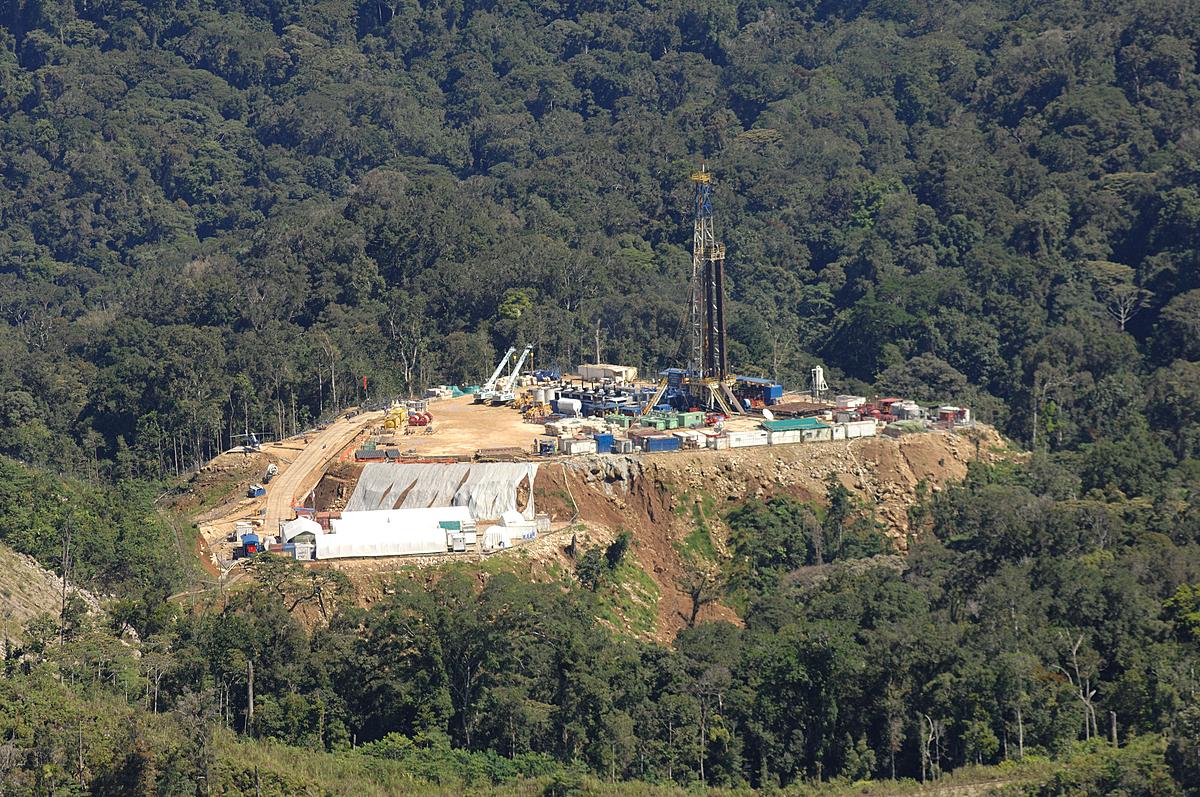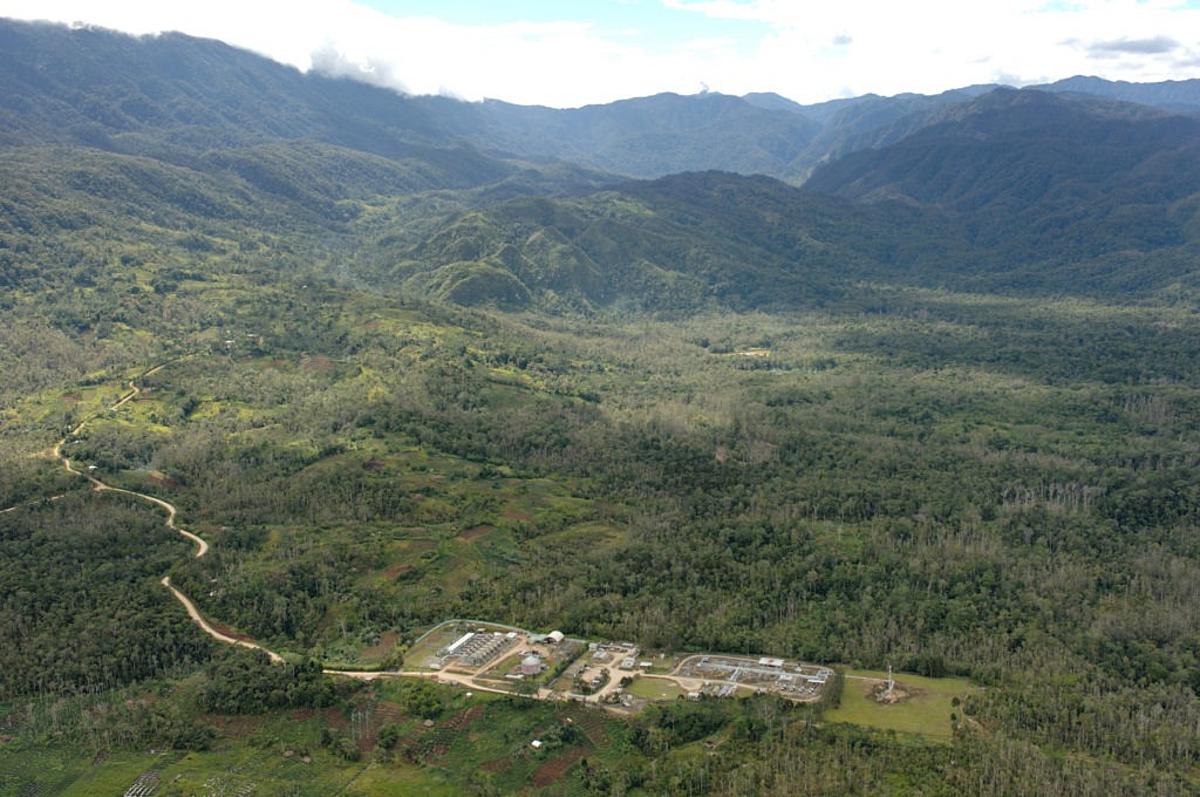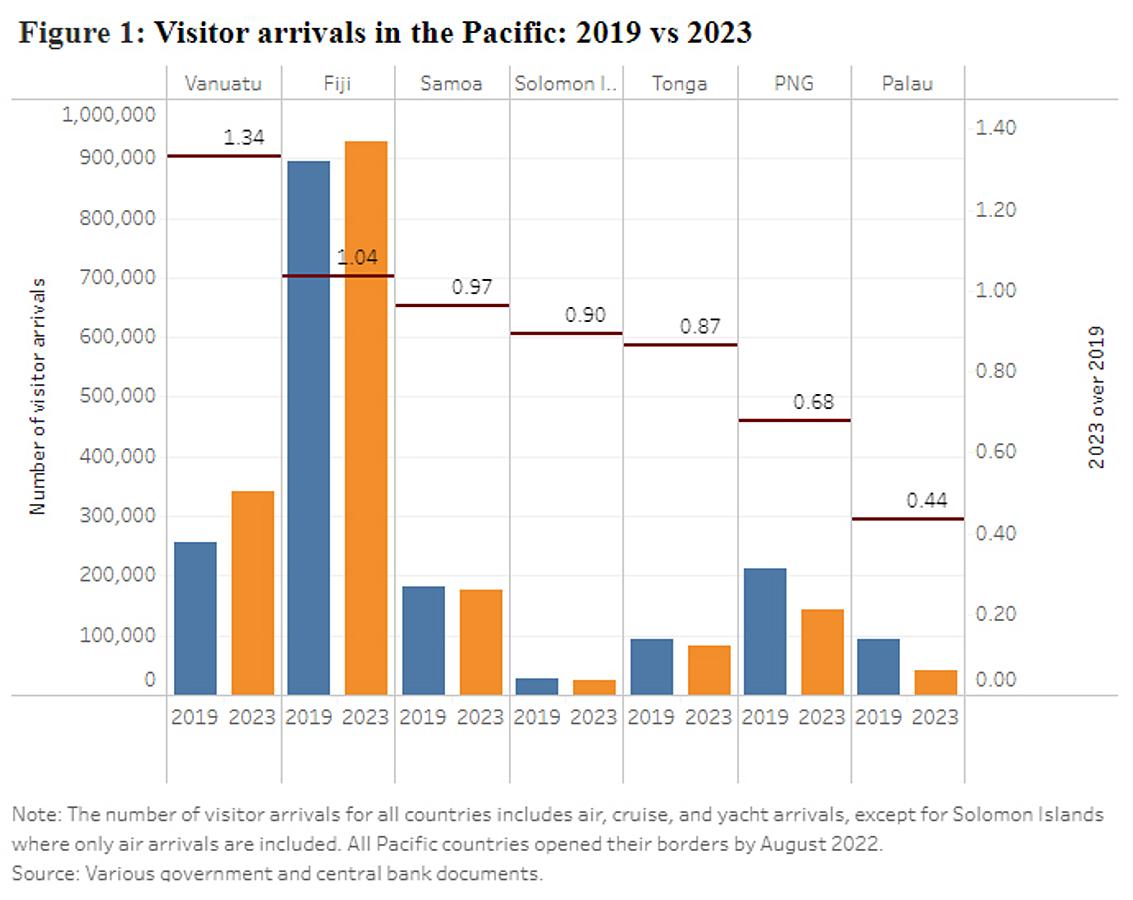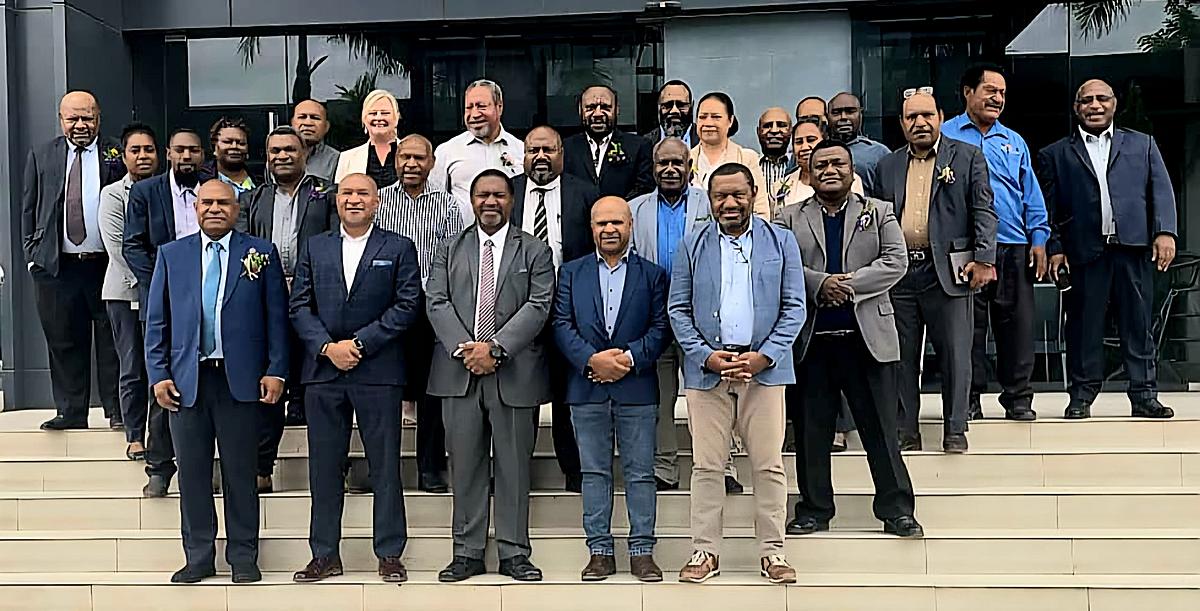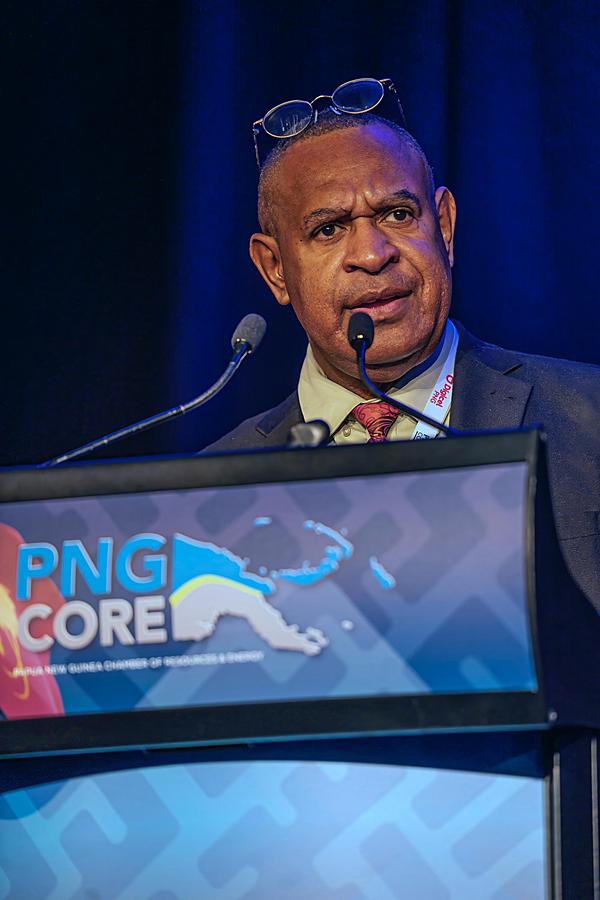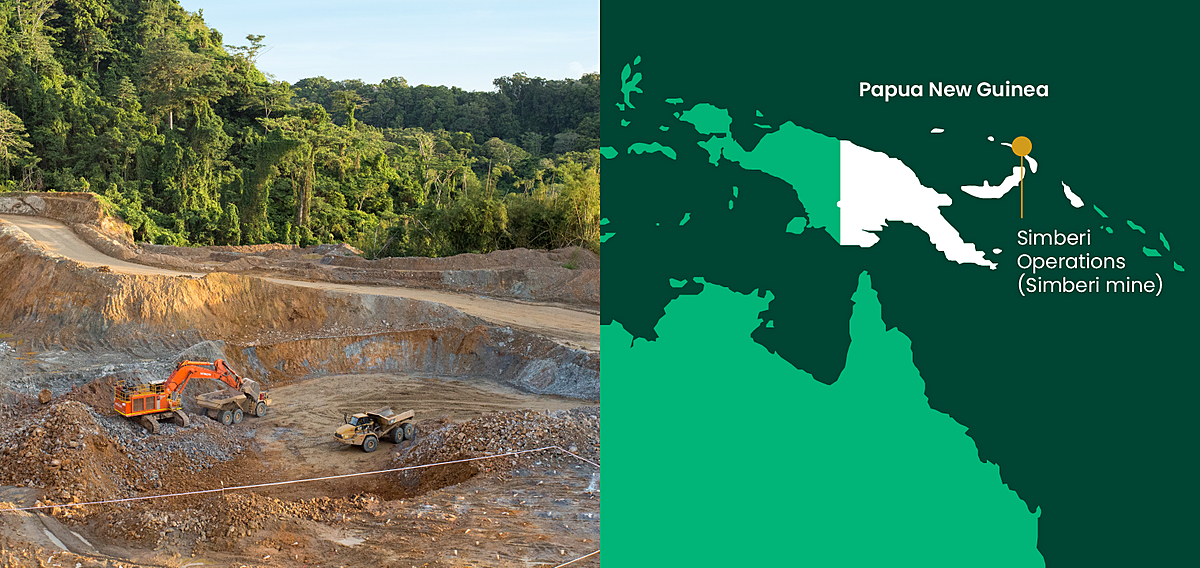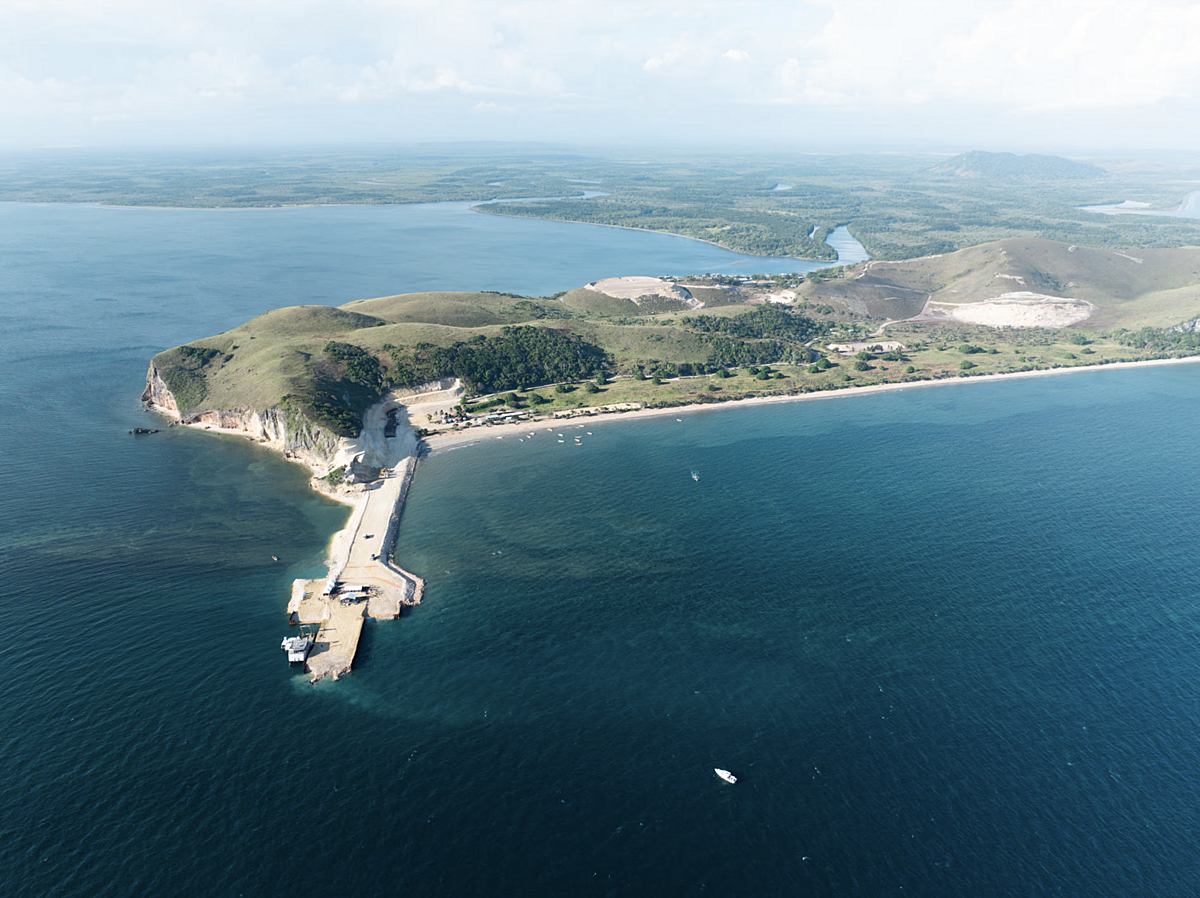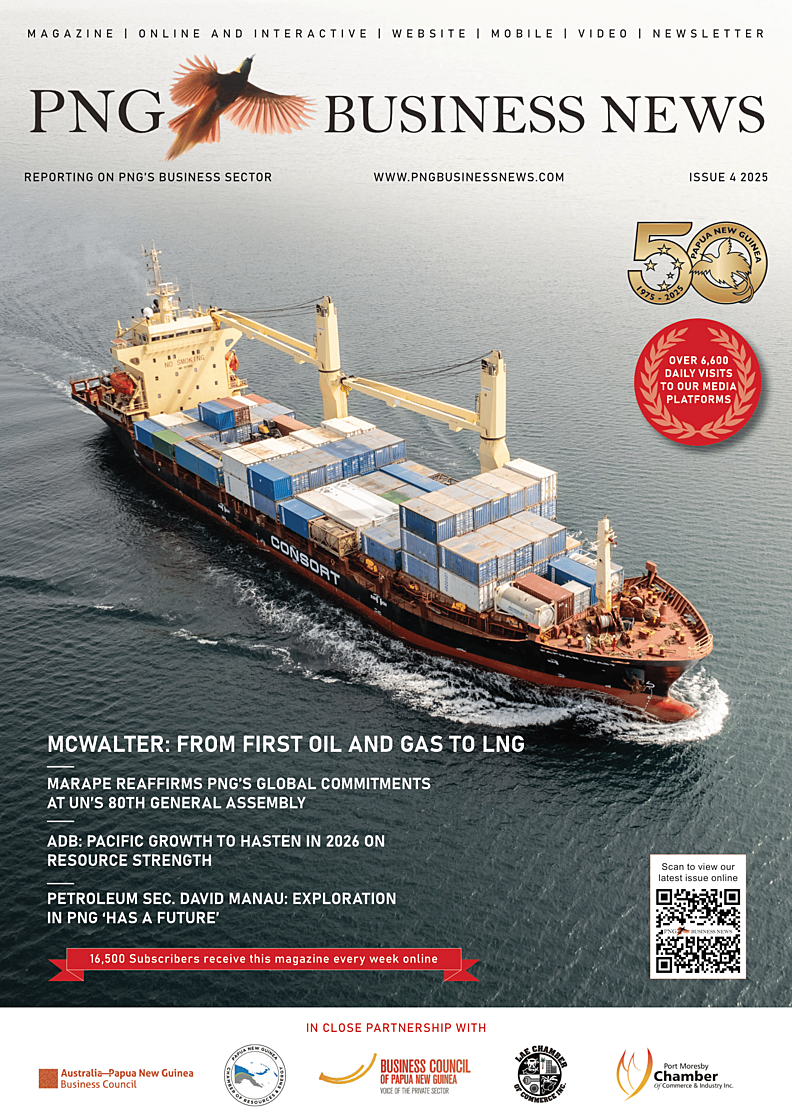Does it make Economic Sense for PNG to Continue Imposing this Windfall Tax on Oil and Gas Projects?
(a) Introduction
PNG has been applying the Additional Profit Tax (APT) since it was first introduced on Mining Projects namely OK Tedi and Pangua Mines. When oil development commenced in the early 1990s APT was applied on the first oil project – Kutubu in 1992 and other projects that were subsequently developed including Gobe and Moran. There were expectations that these projects would yield windfall revenues so that the Government could benefit from these revenues. However, to date, APT has not been triggered despite oil has been flowing for nearly 30 years. On account of the natural depletion of known oil reserves APT will not trigger on current oil project as the resource volumes have become marginal. It is not normal for APT to be paid on marginal projects and other APT trigger factors such as oil prices are low. These factors have also made the environment not conducive for APT to be paid on oil projects.
Despite that, APT has been applied on the first gas development – the PNG LNG Project. APT has also been applied on Papua LNG Project and the same tax will be applied on P’nyang gas project. However, the experience tells us that APT did not trigger on oil projects. The essential question to ask then is; will APT trigger on gas projects? The economic projections of the gas projects indicate that these major world class gas projects will pay APT. However, over the course of production the assumptions based on which the projections were made change and so whether the gas projects will actually pay this windfall tax will depend on trigger factors.
These factors are not limited to large resource volumes, high oil/gas price, low cost (capital cost and operating cost) and so forth. From the investment perspective, this tax is also capable of deterring investment. APT can scare the investors away if the government introduces this form of tax because investors would not be desirous to share the windfall revenues with the host Government. PNG had experienced the impact of removing APT in 2003. The exploration sector completely reversed when “incentive rates” which included removal of APT, as part of the fiscal package, was introduced in 2003. In 2002 only two APPLs (Application for Petroleum Prospecting Licenses) were received by the Department of Petroleum & Energy. However, as consequence of the new fiscal incentives the award of new PPLs increased to unprecedented height. This incentive, in particular, the removal of APT changed the landscape of the exploration sector in the country. To date, there has not been any proper investigation and assessment done to ascertain the real reasons behind APT not triggered or paid on oil projects? Despite that PNG Government is adamant to continue applying APT on petroleum developments, recently on gas projects. Have the successive Governments too weak to administer this complex tax? Is there any deliberate avoidance by oil companies to pay APT? While these questions need definite answers the factors that cause APT to trigger are both internal and external. For example, oil and gas prices are largely external to oil companies and governments. Oil companies have no influence over the prices.
They are essentially price takers. However, some of the trigger factors such as cost may be controllable or manageable by companies. For example, if oil companies know when APT is likely to trigger they may increase cost ahead so that the point of APT trigger may be delayed or not paid at all. On the other hand, if the Government is determined to continue applying APT on hydrocarbon projects it must have the capacity to administer the tax collection. On the back of weak government administration especially, if tax office is weak important taxes may not be collected. It is a well-known fact that oil companies operate across borders, jurisdictions and different fiscal environments. They know the behaviours of the Governments and they can capitalise on the weakness of the government to their own advantage. If the Government is incapable of managing and administering complex taxes, they should consider simple, straight forward taxes which can be conveniently administered and collected rather than introducing a monster that also deter investments.
This article discusses two aspects in relation to the Additional Profit Tax which is sometimes referred to Windfall Tax or Resource Rent Tax in some jurisdictions. First part deals with the background and general explanation of Additional Profit Tax as applied globally in hydrocarbon producing jurisdictions. The second part discusses the application of APT on oil and gas projects in Papua New Guinea; whether or not it is necessary to continue applying APT on all oil and gas projects in the country despite no APT has been collected from oil projects.
(b) Background
Tax is the main device by which the governments receive revenues from extraction of the resources it owns. Mineral and petroleum taxes are quite different from other taxes because of their special features. The oil, gas and mining projects are capital intensive, long lead-time; high cost of failure, high risk and finite life span hence, require special taxes. Beside the primary objective of raising revenues, the governments may be desirous to pursue social and economic policy objectives, promotion or destruction of industries or as a means of controlling sector development. Governments apply both direct and indirect taxes on mineral and petroleum projects. The governments may have genuine reasons for imposing taxes, but taxes can deter investments. One such tax is APT, which is charged at positive Net Present Value of the project cash flow. Resource producing countries apply this type of tax on resource projects. Papua New Guinea applies APT on oil and gas projects. Nevertheless, to date the Government has not collected this windfall tax from oil projects and is hoping that the gas projects will pay APT. There is no guarantee that APT will trigger on gas projects because the trigger of this tax is dependent on multiple factors. Does it make sense to continue introducing this tax or opt for simple taxes where the government can administer and collect tax?
(c) Concept Definition
Tax is a payment an investor makes to the government for which it does not receive a return. While economists define tax that way, a layman’s definition is as powerful as it is. In this definition, tax is a payment investor makes to the government for the right to use its resource.
The government, at different stages of project development applies various taxes; it could be well before the actual development of a project such as bonuses. Taxes may be broadly separated into direct and indirect taxes. Direct taxes are direct payments made by enterprises to governments, based on standing policies or laws in most jurisdictions. Direct taxes are collected by tax offices. Most common are Income Tax and examples of indirect taxes are import duty, export duty, stamp duty, sales tax, and excess taxes such as Resource Rent Tax.
Indirect tax may extent to pre-development taxes like bonuses and license fees. Tax rates vary between fiscal regimes and point of payment also varies along the value chain of projects.
Additional Profit Tax (APT) is an indirect tax applied by governments on resource projects and targeted at excess profits and can be quite complex administering it. In Norway, it is called Special Tax, in the UK it is called Petroleum Resource Tax (PRT), in Australia, it is termed Resource Rent Tax (RRT) and in the USA the tax is called Windfall Tax. PNG coupled with Ghana, Cameroon, Namibia and Gambia call it Additional Profit Tax. The threshold or uplift and tax rates vary between countries, but this tax targets a profit sharing scheme based on a rate of return. APT is calculated on a cash flow basis and payable when the accumulated value of net cash receipt is positive. It triggers after the project costs have been recovered and positive cash has been received hence; it should not deter investment. Such tax does not expect to distort production and investment because it has threshold that has been set to trigger additional taxation. However, APT has several weaknesses including difficulty in setting threshold rates, tax rates, and gold plating, which may scare investment.
APPLICATION OF ADDITIONAL PROFIT TAX
(d) Government Objectives
The primary aim of project host government is to ensure the economic benefits are derived from its resources development. The State is the legitimate authority, having sovereign power over its natural resources including petroleum from which it must share economic benefits with investors who put up investment, technology and essentially take huge risk especially at exploration stage. These benefits might be realised through the government’s fiscal measures designed to capture the maximum economic rent at an acceptable level of risks.
The host government’s intention to benefit from the petroleum resources is enshrined in the country’s fiscal policy and legislative framework. Beside this, project agreements and license conditions may encompass similar conditions through which host government derive benefits from the natural resources. The primary fiscal devise employed in the extractive industry is taxation. It is to be noted that taxes are devices through which the government derives revenue from extraction of petroleum resources. Taxes applied on oil and gas projects are usually more than taxes imposed on other activities because of the high rents that are accrued from these resources. Tax may be also defined as price of exploiting public assets or resources. The government issues rights to companies to explore, develop, process and sale its resources, and in return the company pays government taxes. This is more common in royalty/tax or concessionary fiscal regimes.
The government has multiple objectives for imposing tax on profits. This emanates from the government’s perception that it should share from any upsides or windfall profits investors make in the extraction of the natural resources. The governments raise money through taxation to maintain and develop the social, economic, infrastructure and other sectors in the country. The companies are targets of taxes because the governments need to raise as much as possible to address the country’s social welfare schemes. The government’s objective is also to demonstrate its ownership and control of the project. The governments know that they can maximise wealth from their natural resources through providing incentives and encouraging exploration and development of the resources. And this appears to be the driver instigating PNG to introduce APT on gas projects in the country in anticipation that this would allow the State to receive a reasonable share of profits from gas project in excess of a level which provides a good return to investors. The government considers adopting APT because of the advantages the windfall tax can generate such as the flexibility and non-deterrence on marginal profits.
(e) APT Trigger Point
Tax and threshold rates vary between countries that apply APT on petroleum projects. In some countries, APT may be imposed on selected projects rather than all petroleum projects.
There is a point in time APT is expected to trigger and this is directly related to net present value of the project. How this works is that; the investor is allowed specified threshold rate of return before tax can be paid to the government. The threshold rate of interest is used to compound forward investor’s cash flow until the accumulated total becomes positive. It is uncommon for the accumulated total to turn positive in the early years of production. APT triggers at the back end of the project cash flow when all the cash outlays attributable to the field and all the expenditures incurred are recovered. APT may become a nightmare from an administrative standpoint for government. APT permits threshold rate of return to be earned on the investment before the tax is payable. The scheme is designed to trigger automatically for profitable projects hence; trigger on marginal project is unpractical. It is highly sensitive to price fluctuations, exploration costs and marginality of the project. Clearly, these factors must also be considered when constructing APT. APT is a function of positive NPV, meaning it cannot trigger when the NPV is negative.
CONCERNS REGARDING APT ON INVESTMENT
(f) Concerns Regarding Designing APT
Three issues emanate when designing APT which can distort investment in the petroleum industry. Firstly, it is a concern to investors when the Government enacts legislation that sets threshold rates that are below those employed by the companies. This follows from the fact that investors do not normally reveal their threshold rates that represent their discount rates to the Governments, as it is confidential and commercially sensitive. Especially, in Royalty/Tax systems, Governments don’t have access to critical and important information resulting in estimating discount rates way out of proportion. It becomes grave concern to investors when the government introduce rates that do not match companies’ estimates. The government’s threshold rates should not be greater than the average returns on comparable investments. The rate of return is a measure, which indicates to the companies their return on investment. A rate away from investors can be a source of grave worry to the investors and undermine investment prospects in the country.
The second concern regards the higher APT rates imposed on the profits when other fiscal devices such as royalties, corporate tax, withholding tax, import duty, and GST have higher rates. Though APT triggers after the cost has been recovered the imposition of this tax becomes burden to the companies because this tax comes out of their cashflows. APT is an additional tax and so the companies view this tax as a concern if governments introduce it.
Thirdly, Government’s selection of the expenditures, especially what constitutes the tax allowance is concern to the investors. The companies prefer a tax base that is wide, incorporating expenditures outside ring fence or outside the project in question. The narrower the tax base, the higher tax rates it is for investors. Though project-by-project basis remains a normal function for taxation, companies may desire government to include non-project expenditures as allowable for tax purposes. Investors become uncomfortable if government narrows the tax base by way of deducting exploration cost from the same well, which is being developed. Against high exploration costs, poor rate of discoveries and other factors, which investors must bear, a narrower tax base could prohibit further investment.
(g) Inflation and Exchange Rate Variations
It can become investment prohibitive if divergence on inflation and exchange rates has not been fully accounted for when designing APT. Inflationary expectations vary over time between what is known as ‘real’ and ‘money’ rates of return. When additional profit tax rates are designed inflation is purposely or not purposely bypassed by governments. The investors are overburdened with the difference in the real and money value that changes over time from the point when tax is first introduced. A mere ignorance to inflationary expectations can ruin investors’ expectations. Similarly, variations in exchange rates can lead to investment distortion. It raises serious doubt when the Government fixes tax rates because this important aspect is easily overlooked. This can distort investment motive if companies are ‘forced’ into a situation where all calculations are done in host country’s currencies. Given situations where investors intend to remit profits to home countries or engaged in transactions involving foreign currencies, they could lose a lot of value than they would in transactions involving hard currencies.
The other concern relates to the tax investors’ home country charges as consequence of delays in trigger period. The additional profit tax takes several years before it triggers especially, in the middle or at the back-end of project cashflows. During the long period the governments may charge tax that become burden to investors. This happens if the investor is incorporated in the host country.
(h) Administrative Nightmare
The administration of APT can be excessive, lacks efficiency, simplicity and does not provide incentives to investors. This questions the government’s inability to administer APT. The government may be questioned why it introduced such tax in the first place, which it is incapable of administrating it. PNG has not collected any APT from the oil projects despite reviews with appropriate adjustments made to the tax rates and thresholds rates. The rapid changes in the fiscal regime were done because the Government saw oil companies making huge profits while its share from the project were not forth coming. This policy however, did not work because it lacked efficiency, simplicity and stability. APT is furthermore, criticised as complex and lacking flexibility. This demonstrates one thing that the host government may have defined objective in constructing a fiscal device but if it fails to take into account investors’ concerns; this can ruin investors’ confidence. Further, frequent changes in fiscal policy would frustrate investors as they will be required to keep adjusting every time when a change has been made to the fiscal devices. It also creates additional costs and tasks where host governments may be wasting time designing and changing fiscal devices that do not work in the end.
(i) Impacts on Exploration Activities
Investors know the value from exploration and they also know that the value may be positive before tax. However, if it turns out to be negative after tax this could seriously impair exploration activities. No investors would continue exploration and risk money in an environment characterised by negative rate of return. APT could produce disincentive effects at the exploration stage of petroleum exploration activity. Further exploration activities will be affected which could have consequential impacts on other petroleum activities. The fact remains. For without any form of exploration activity going on in the country the oil and gas industry is presumed dead. In 2002, the government of PNG introduced set of fiscal incentives known as “Incentive Rates” which included the removal of APT as an incentive to exploration sector. These incentives immediately had direct impact on the country’s exploration sector. The incentives reversed the dwindling exploration sector to what it is today.
(j) Host Governments not a Risk-Taker
The investors view the government’s bid for a share of profit as an additional burden on their cashflows. This stems from the view that the government is not a risk taker and so why should they be asking for a share from the profit. The governments however, dispute this point that it should benefit from the extraction of its resources it owns in the country. From international companies’ perspective, an excessive profit tax can be discouraging if companies’ exploration risks are not recognised and rewarded. The Government is already a recipient of other taxes such as royalty and corporate tax, which are long term and increased as the production reaches peak levels. In other words, this form of tax is progressive. The investors see the government sharing profit as a non-risk-sharing partner. This can demean further investment if the government continues to introduce fiscal devices that permit it to only benefit than to share the risks involved in converting petroleum resources into a profitable venture. In some countries where governments acquire equity in the projects they also pay their share of the exploration cost through reimbursements. In this way, governments could be seen to be sharing certain level of exploration risks. PNG Government reimburses past cost or sunk cost equivalent to its share of the participation interests in a project. This payment is treated as a point of entry into the project by the State through which the State becomes a participant in the project through its National Oil Company. This is referred to as “back-in right”. This point can become a contentious issue. The argument is that; why does the State has to be made to back-in, into the resource project which it already owns as a legitimate owner of the resources? It makes no sense from the ownership perspective.
HOW MIGHT RISKS ASSOCIATED WITH APT BE ADDRESSED?
(k) Measurers to Address Risks
One must understand where the government is coming from, as host of the resources. The governments have strong case for wanting to share the benefits from its resource extraction. On the other hand, companies spent hard cash on finding the resources and developing it. Considering this, rather than underestimating the position of one against the other, both parties must work on the negotiated outcome which seems a reasonable solution to designing a fair fiscal device. The following measures suggest how this deterrence to investments might be mitigated.
(l) Open-Ended Threshold Rates
Because governments are often uninformed of the companies’ ROR they can enact tax rates which may be detrimental to investors. When a fiscal device is legislated it becomes a law which companies have no rule over it but, obligated to comply with the terms that is stipulated in the legislation. Remedies to these anomalies may be through “open-ended threshold rates.” In this case, the government must leave the tax rates to be negotiated with companies at the time when a project is being contemplated for development rather than legislating it into a law. This will enable both parties to arrive at an agreeable rate, which reflect the rate of return for the investor. Few countries have demonstrated this by simply leaving the terms to be negotiated. Such terms could be negotiated and agreed between the parties in the Project Agreements or Gas Agreements for specific projects. The Oil and Gas Act (Sections 183, 184 & 185) allows such agreements to be negotiated between the State and the project developers at the time of developing oil and gas projects.
(m) Determination of Tax Rate Application
The determination of the tax rate for APT is an important factor that requires considerable thought. If a higher tax rate is imposed on profits there is no guarantee for APT to trigger. Therefore, it is important that when a tax rate on profit is introduced, it must consider other fiscal measures levied by the government. The companies may already be overtaxed through fiscal devices available to the Government. A higher tax rate may unnecessarily penalise companies resulting in low or negative return to the government. It is quite usual for companies to be making lose hence, governments need to have a wider and broader perspective of the entire fiscal measures it employs in the sector. There have been experiences where APT, although introduced through legislations, such taxes may not trigger. Therefore, there may be no reason for introducing APT in the first place. Factors such as low oil price, marginal field status, high cost and other factors prevent APT to trigger. While the government is the resource owner with exception of US where the ownership lies in the landowners, it is unrealistic to introduce high tax rates, which do not meet the companies’ expectations. Better outcome for all parties may result from a negotiated outcome, rather imposing on one party or the other.
(n) Wider Tax Allowances
What is important to the investors is the tax base or allowances rather than tax rate. Few governments may be willing to concede widening the tax base, but it is an incentive that must be considered. Here, the government grants allowances to companies to deduct non-project expenditure. The companies are given the permission to take expenditures from other fields or essentially, outside the definition of ring fence. This could be done at the expense of the ring fence concept, as the expenditures allowed for deduction goes beyond the boundaries of the project in question. It is a form of relief to oil companies as it provides wide tax base for taxation purposes. Other considerations may come into play if a company has lived in the country for a long period of time, more allowances may be granted. If the success rate of discovery is poor and cost of exploration is escalating high, relief, in the way of wider tax base would encourage investment.
In the UK, tax relief was granted to oil companies when the Petroleum Rent Tax was in force. Special tax relief by way of enlarging the tax base should be considered as such incentives can encourage further investment. This also can trigger government-investor relationship. Additional profit tax is normally taxed on a contract-by-contract basis, which would mean unsuccessful exploration cost of one project might not be set off against another.
(o) Tax Incentives
Investors’ concerns regarding APT stems from the fact that there are congenital taxes such as royalty, corporate tax, and VAT and import duties. The government need to reduce other fiscal measures to give the investors some leverage to the investors already imposed on the companies. This should provide relief from paying heavy taxes. Certain countries provide tax credit scheme where companies implement infrastructural projects for which they claim credits. Investors are also given incentives such as tax holidays, especially on pioneering projects. If provisions do not exist in host country’s tax laws, others means should be explored as means of providing incentives to oil companies. If the government has imposed multiple taxes including APT, it should provide incentives that generally aim at investment or re-investment, so it encourages investors to generate return on their investments. PNG applies Tax Credit schemes in which companies build infrastructure projects for which they claim tax credit. The National Football Stadium in Port Moresby is a fine example of the application of the tax credit scheme. This scheme ensures real infrastructure development is built rather than having the oil money dwarfed in the national budgets.
(p) Shield against Inflation
Inflation could be detrimental to investors, if not handled well. Sufficient protection needs to be employed to shield off any inflationary effects. One measure could be use of interest rates to protect investors. However, interest rates may not work well in an inflationary environment. In this situation, incorporating some form of direct inflation indexing. In adopting two-tier APT, PNG linked it to the Consumer Price Index (CPI) which is an inflation index appropriate to the currency used for tax accounting, the US dollars. Inflationary measures were considered as protection when APT was first introduced. For instance, a 25% rate tax would trigger on cumulative net cash flow with 15% plus inflation of prior losses. Inflationary measures are considered essential hence; they must be taken on board when APT is considered.
(q) Consideration for Hybrid Scheme
Another measure that could be considered for offsetting drawbacks of APT is to combine APT with standard company tax. “A preferable alternative is to combine the resource rent tax and the corporate tax with a provision for conditions accelerated depreciation designed to provide tax relief only in the range of possible outcomes whose expected return are less than supply price of investment or whose expected payback period exceeds desired periods. Company profit tax may be deducted when assessing APT through right-off of capital expenditure. However, such a measure could deter profitability of projects. To reduce risks and stabilise fiscal measures some jurisdictions combine resource rent tax with the normal taxation. Papua New Guinea along with other countries such as Namibia has combined APT with normal taxation applied on resource projects.
(r) A ‘Neutral’ Environment for Government and Investor
Governments and companies are two distinct institutions with distinct functions and objectives. The former desires its resources developed so it can manage the country from the proceeds from the project while the latter invest to maximise profits. Companies have the capabilities in terms of expertise, technology and exposure to adequate financial resources which governments don’t normally have at their disposal. But both have a common theme; to have their objectives achieved; hence a balance must be strike between them. The Government must not introduce fiscal measures, which may scare investors away. Investors on the other hand must co-operate with host governments, in ensuring adequate returns will be realised. In extractive industry, investors may not survive without co-operating with resources owners and on the other hand, government cannot progress without investment. These are fundamental prerequisite for development. If a fiscal measure such as APT is to be introduced, it must entail a fair rate that suits both parties. One area in which the investor and government may agree to introduce a fair APT is both parties agreeing on the uplift and tax rates. Reasonable rates may trigger APT earlier than delayed or not paid at all.
THE EXPERIENCE OF APPLYING ADDIOTNAL PROFIT TAX ON OIL AND GAS PROJECTS IN PAPUA NEW GUINEA
(s) Additional Profit Tax Application in Papua New Guinea
Papua New Guinea has APT as a revenue generating device applied on both oil and gas projects. However, APT has been marked by inconsistent policy changes and shifts in desperation to have the tax trigger since it was first introduced. Initially, the country had a single tier APT and it introduced a two tier APT, removed APT through policy change and reinstated APT. In undertaking these changes there have been different uplift and tax rates introduced and removed. However, despite these changes, to date, none of the country’s oil and gas projects have paid APT. The following account the different changes that have been made to APT largely, in an effort to ensure this tax pays.
(t) Single Tier APT Rates Applied On Oil Projects
The Additional Profit Tax applied mainly on oil projects prior to 2000 Tax Review headed by Sir Nagora Bogan was a single tier. This APT provisioned in Division 10- Subdivision D, Division 10A – Subdivision F and Division 10B –Subdivision F of the Income Tax Act was in force until 2000.
The Additional Profit Tax has different application rates. APT had varying rates under three different fiscal regimes including general petroleum fiscal regime, gas fiscal terms and frontier fiscal terms. The threshold rates applied in the three fiscal regimes also had varying rates.
Additional Profit Tax applied in the general petroleum fiscal regime was 50%. That meant when the additional profit tax triggers oil companies would pay 50% of the windfall profit to the government. The benchmark or rather the threshold rate of return when APT was expected to trigger was set at 27%. These rates were applied by the PNG Government mainly on oil projects.
The additional profit tax rate applied to the gas sector was different. Under the gas fiscal terms, the additional profit tax rate was set at 30%. The threshold rate of return when additional profit tax was expected to trigger was 20%.
The tax rate and threshold rate were applied differently in the frontier fiscal regime. It had a special tax rate of 35% with a 20% threshold rate of return. The trigger rates for gas and frontiers terms had same rate of 20% but differed in tax rates.
(u) Introduction of Two Tiers APT
On recommendation of the Tax Review in 2000 a Two Tier APT was introduced. This emanated from the concerns that the accumulation rate was too high at 20%, resulting in non-sharing of benefits from moderate profitable projects, and it was recommended that APT that actually trigger should be introduced. It was opted that APT should be made a more sensitively progressive tax by introducing an extra tier. It was envisaged that the incremental rates of tax in each tier could be significantly lower in order to reach an overall outcome. The two tier APT was to encourage more benefits to the State while leaving substantial upside with the investors. In other words, APT should be one that does not damage the project and deter investment.
In undertaking this change, the first tier of APT was levied at a rate of 20% when the accumulated value of after Corporate Tax cash flows was positive at a 15% nominal interest rate. The second tier was levied at a reduced rate of 25% when the achieved internal rate of return after Corporate Tax and first tier APT exceeds a 20% nominal rate. It was recommended that APT on gas income would be assessed separately for each designated gas project. It was further envisaged that the introduction of the two tier APT at the proposed rates and thresholds would not deter investment. The first project that had two tier APT is Moran Oil Project (PDL5). PNG LNG project has two tier APT. The APT for tier 1 has 17.5% uplift and tax rate of 7.5% whereas tier two has 20% uplift and 10% tax rate. However, in negotiating the Papua LNG Gas Agreement in 2019 the Government conceded to a single APT tier. Both the uplift and rate have the same rate of 15%. The basis of agreeing to 15% uplift and 15% tax rate in the Second LNG is unclear. For a profitably project like the Papua LNG with the resources base of 10.3 tcf, APT tax rate should be higher than the 15% agreed to in the agreement, as more upside is anticipated in the project provided that other trigger factors are working as anticipated. The State may be in danger of losing more upside benefits from this significant LNG development.
(v) Removal of APT as Fiscal Incentive Rates
Instigated by the industry’s concern that the 2000 Tax Review weren’t improving the country’s fiscal regime, dwindling exploration activity, a paucity of new field discoveries, similarly dwindling oil production and declining government revenues from proceeds in late 2002 the government introduced new fiscal incentive rates to rejuvenate the petroleum exploration sector and production activities in PNG under special terms called “incentive rate petroleum operations”. These fiscal incentive rates were designed to provide a strong stimulus to oil and gas companies already established in PNG and attract potential investors to explore, develop and produce the country’s petroleum resources. The new rates cover changes to the two vital elements of PNG’s petroleum fiscal system.
(i) Abolition of Additional Profits Tax
The fiscal incentives resulted in the abolition of APT on all new petroleum projects that were granted PPL in the period 1st January 2003 to 31st December 2007 and any new PDLs emanating from these PPLs granted on or before 31st December 2017. The APT was an incremental tax on the accumulated value of net project receipts that is: net income less deductions uplifted of a set accumulated rate each year. The normal provisions for APT at the time were for a 20% tax on any positive balance of net projects receipts after applying a 15% accumulation rate, and a further 25% tax on any positive balance after applying a 20% accumulation rate. As part of the incentive package, the two tiers APT applied on all petroleum operations were removed on new projects. APT had been seen as a real disincentive, where it was triggered at a relatively low rate of return for a project developer. This was considered disproportionate to the risks assumed by the project developer.
(ii) Corporate Tax Reduced to 30% on Oil Projects
The corporate tax rate was reduced from 50% and 45% tax rates to 30% for petroleum activities and operations. The new rates were only applicable to petroleum projects arising from PPLs granted in the period 1st January 2003 to 31st December 2007 and PDLs emanating from these PPLs granted on or before 31st of 2017.
The removal of the APT had direct impact on the country’s exploration sector. The exploration sector in the country improved drastically. The PPLs awarded and the exploration expenditures improved remarkably from 2003-2008. As demonstrated in the chart below the fiscal incentives had positive impact on the exploration sector.
As a consequence of introducing these incentives by the National Executive Council on 6th December 2002, the PPL holders at the time surrendered their existing licenses and top filled in order to qualify for the incentive rates. The new PPL applicants automatically qualified for the incentives. However, this incentive was a policy change rather than a legislative change. The Government did not give any legal effect hence; the incentive had no legal meaning. The expectations of the oil companies to benefit from these incentives were shuttered. This remains a fiscal blunder on the part of the Government because the incentive practically turned the dwindling exploration sector in PNG into positive outlook. In 2002, only a few PPL applications were lodged with the Department of Petroleum and Energy. However, this trend drastically changed in 2003 and beyond. Oil companies invested heavily in the exploration sector knowing that they would qualify for the incentives but the Government did not honour its commitment. However, there was a catch to the fiscal incentive rates. The PPLs awarded under the Incentives Rates would qualify for the incentives provided that the PPLs led to positive discoveries of hydrocarbon and must be awarded Petroleum Development License (PDL) on or before 31st of December 2017. Some companies such as InterOil – former owner of the Elk/Antelope gas discovery had argued that their license would qualify for the Incentive Rates because they too surrendered PPL 238 and top filled to qualify for the incentives. The Government stood by the position that this was a policy decision. New companies, especially, small players applied for new exploration licensees believing they would benefit from the Incentive Rates. However, the window for any negotiation was shut when the Government reversed its policy decision on APT and re-introduced it on PNG LNG Project.
(w) Has APT Triggered in in PNG?
There is a point in production life of a project in which APT is expected to trigger and this is directly related to net present value of the project. How this works is that; the investor is allowed specified threshold rate of return before tax can be paid to the government. The threshold rate of interest is used to compound forward the companies’ cashflows until the accumulated total becomes positive. It is uncommon for the accumulated total to turn positive in the early years of production. APT triggers at the back end of the project cash flow when all the cash outlays attributable to the field and all the expenditures incurred in the area have been recovered. The scheme is designed to trigger automatically for profitable projects.
The experience in PNG is that the Government has not collected APT from petroleum operations in the country. The Hides Gas Project, Kutubu Oil Project and the Gobe and Moran Oil Projects have not paid APT. Have the successive Governments fallen into the trap of administrative nightmare? It is one thing to introduce tax devices on projects and it is another thing to ensure taxes are administered and collected. It has also been noted that APT trigger is subjected to multiple triggers. APT is sensitive to price fluctuations, exploration costs and other sensitivities. PNG’s hope is that the three world class major gas projects including PNG LNG, Papua LNG and P’nyang pay APT. These are huge projects capable of paying windfall tax but in order for this tax to trigger the factors that ensure APT to trigger must be working favourably. The economic projections which have been made for the gas projects are based on certain assumptions. The assumptions will change during the production life of the gas projects and so nothing is certain whether APT will be paid. APT is a windfall tax which is structured to trigger at the back end of the project cashflows. The downside of this tax is that the cream of the project revenues have been extracted upfront by the time APT is expected to trigger. The oil/gas price dwindle and project cost escalates; these are indications that APT may not be paid.
The following factors have contributed to non-trigger of the APT in PNG;
The threshold rate of 27% for general petroleum fiscal regime is probably high making it impossible for APT to trigger.
The threshold rate of return was originally set in a high inflation environment at the time.
The high rate of Corporate Tax and other tax-induced additions to costs which would enter the additional profit tax account.
All petroleum operations in PNG are high cost operations and essentially no drastic cost reduction which would have allowed APT to trigger.
The oil fields did not experience significant incremental increases in reserves. The incremental increase in Kutubu was minimal and to a large extent inadequate to trigger APT.
On average, oil price has been generally low so the APT trigger was unlikely in PNG’s oil projects.
In order for APT to trigger the above factors must work in unionism. Increase in one trigger factor such as oil price may not necessary cause APT to trigger. If one or few of the factors were to instigate APT to trigger they must be exceptionally perform well.
(x) Can APT Be Avoided?
It is important to remember that any government’s attempt to introduce a tax would be viewed by the companies as regressive device. Inevitably, the companies would not want Government to discuss anything in relation to introducing taxes, particularly new tax. The companies aim is to maximise their profit margins. Like other form of taxes the imposition of APT is a “cost” to the company although it triggers after all the costs have been recovered. It is to be noted that the APT impacts on the companies’ cashflows. Companies are asked to pay additional cost on top of the normal taxes such as corporate tax they pay to the host governments. There are several ways APT could be delayed or avoided;
Based on certain assumptions companies know when APT will trigger during the production phase of projects. Know the trigger points the companies may deliberately make adjustments to trigger factors such as cost. Companies may increase costs such as capital expenditure or operating costs purposely to postpone or prevent APT from trigger. In-depth project knowledge and accessibility to critical information put the companies ahead of Governments where they may conveniently manipulate trigger factors within their control.
Companies may consider securing increases to other form of taxes from the government such as import duties, export levy. These are essentially cost to the companies and could delay or prevent APT from trigger. This is especially, when the companies know that they may pay huge amount in APT.
Certain companies may use concepts such as “marginal field” without giving too much information to the host Governments as a cover up. The companies may deliberately down grade a project status from a profitable project to a marginal project. In a scenario where the project is in total control of the companies and little to no checks done by the host governments things can go wrong. Companies predict when APT will likely to trigger and so they can intentionally down grade a project to marginal project to avoid paying APT.
Companies may indirectly encourage government to raise threshold level to a higher rate so that additional profit tax may never trigger over project life. This happens when companies predetermine that APT would trigger for a particular project at a given threshold. This calls for the need of the host government to evaluate and analyse the project economics, independent of the companies.
Lack of detail information and data of projects by governments is quite crucial. Companies can make things work in their favour since they know more than the host governments. The responsibility lies in the host government to use its regulatory powers and authority to fully understand the project. The government must be advised when APT will trigger so that additional costs incurred by the companies are not misleading. The government must demand more information/data and monitor any cost increases so that it is not misled. Mitigation to this issue is through State Participation through the NOC. However, the NOC must be a step up meaning, it must have a major stake in the project where it can play influential role. On the basis of minority stake, it will be difficult to shape the decisions in the JV or in the operation of the projects.
It is to be noted that the additional profit tax is not part of the original cash flow of the project. It falls out of it essentially, and can easily go unmonitored by governments. That is why it is imperative on the part of the host governments to monitor the performance of the project. The Oil and Gas allows the Government to monitor all costs incurred by the companies in the country but given the state it is in, the Department of Petroleum & Energy does not monitor the cost trend. There was an attempt to create cost monitoring mechanism in the department years ago, funded by the World Bank Technical Assistance Project, but the inability and incapability of the Department continues to allow the companies to operate almost at will, and to a larger extent cost trends not monitored by the regulator.
(y) Does it make Economic Sense for PNG to continue to apply APT on Oil and Gas Projects?
The fact remains. Oil projects have not paid APT and the oil reserves are depleting. The APT trigger time has lapsed on oil projects hence; PNG will not get APT paid. In negotiating gas agreements the Government has pushed for APT and ensured it is one of the important taxes applied on gas projects. On current projections, the companies can estimate when APT is likely to trigger. However, despite the current economic and financial projections of the project showing APT trigger, it is impossible to be convinced all projects will pay APT. This uncertainty is brought about by the fact that the trigger factors that enable APT to pay change over time and the assumptions based on which the projections were made also change during the course of production. Some of the factors that would enable APT to trigger such as inflationary effects, exchange rates, low (gas) price and reservoir complication are beyond the dictates of the oil companies. These are external factors that the companies will have zero to little control over them. In reality, there is no guarantee that the Government will be paid the windfall tax it aspires from the gas projects. The other point is that the Government may lack administrative capacity to manage and administer monitoring and collection of complex taxes.
Since the first crude production began in 1992 to end of 2019 a total volume of 531 Million barrels of oil (Mbbl) have been produced from the oil fields in the country. The oil reserves are depleting due to natural decline in oil reserves. There are no more major oil reserves left to be produced in the future. The government will never be paid APT on oil projects. The following table shows oil production from 1992 to 2019.
The above table shows that approximately 531 Million barrels of oil (Mbbl) has been produced from 1992 to 2019. An estimated value in access of US$20 billion has been generated from the country’s oil development and production. Reaching peak production of 45 Mbbl in 1993 the oil production has since declined to less than 10 Mbbl at present. APT payment is practically impossible on account of the very low volume of oil production.
In terms of gas projects three major gas projects with large volume of gas have been developed or proposed for development. These projects with their estimated volumes are shown the table below.
Combining the above resources PNG has confirmed gas in access of 20 tcf. PNG LNG and Papua LNG have APT agreed in the respective gas agreements. P’nyang will certainly have APT agreed as a fiscal device. It is to be noted that the application of the Additional Profit Tax is part of the fiscal package the government accord to oil companies for gas development. PNG LNG is now six years into the production phase. Papua LNG has not yet commenced construction and P’nyang is under negotiations. Having missed tax revenues in APT from oil projects the Government will not want to miss out windfall tax from the gas development. But there is a catch to this expectation. The trigger of the windfall tax is subject to all trigger factors performing well so that the Government could collect this form of rent.
Where does this leave the Government? Does it make sense to apply a monster tax that the Government cannot collect tax revenues on the one hand and on another deter investment? The Government may simply opt for other form of taxes where it can easily manage and administer. Preferably, increase those taxes that are paid up front or earlier on in the cashflow projections. For example, increase royalty, development levy or production levy and do away with ridiculously complex tax which may not trigger in the end. As noted, APTs are expected to trigger at the back-end of the projects where at this stage of production the projects are on the declining trend. The trigger factors such as resource volume are depleting, the cost of maintaining the operation are expensive and other factors such as prices are weak there may not have the capability to trigger any windfall tax. The Government should opt for a simple tax that can be conveniently administered and rents collected.
The government agreed to apply APT on PNG LNG Project. Given a high cost of US$19 billion for developing the project a 6.9 MTPA size project with approximately US$12/MMBTU was enough to convince the State that APT would trigger. Current, PNG LNG is producing more than 6.9 MTPA; cost of maintaining operation remains high and the gas price has been very low below US$2/MMBTU in 2020. This scenario does not project a prospect that would enable APT to trigger.
Papua LNG Project may project a different scenario. The project has a high resource volume of 10.3 TCF, the project cost is expected to be lower than PNG LNG Project, may be two thirds of the cost of the first LNG Project. Assuming that gas price trades at US$10-12/MMBTU or better and other factors are working in favour the likelihood of APT to trigger is there. However, if these assumptions change this will almost paint a gloomy picture about APT from the Government’s perspective. APT hinges on all or majority of the trigger factors performing as projected.
Many lessons can be learned from the experiences so far as PNG has had APT since first oil production in 1992. Among the many lessons to be learned a large resource volume project may not necessary pay APT as expected by the government. The other factors must also work in favour to trigger APT and the government may be able to collect rents. The oil companies may manipulate certain trigger factors to their advantage which may result in APT trigger delayed or not paid. Given this, it makes sense for the Government to consider other form of taxes which it can easily predict, administer and collect.

